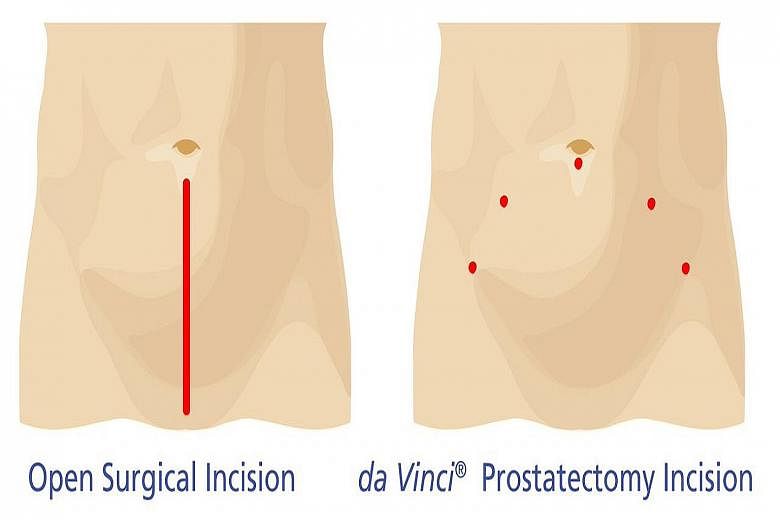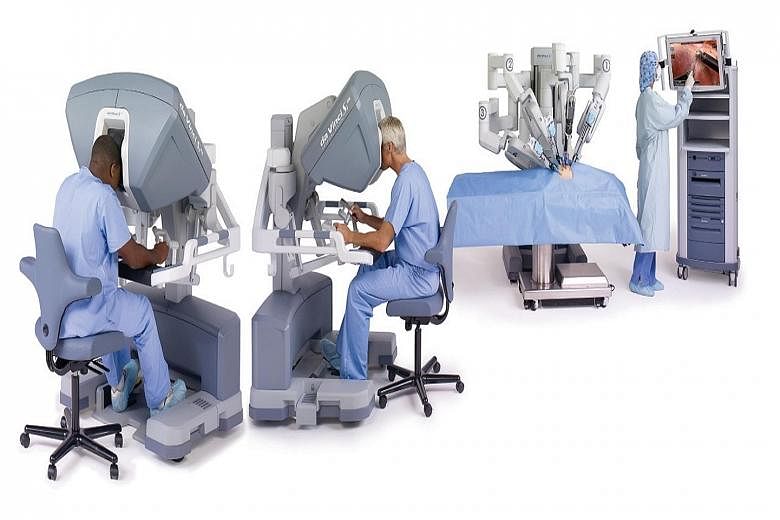Q If I need to have prostate surgery, is using robotic surgery safe? How does it work?And what are the advantages of such surgery?
A Robotic surgery refers to the use of a robotic surgical platform known as the da Vinci surgical system, manufactured by Intuitive Surgical in the United States to perform minimally invasive surgery through small incisions.
Since its inception in 2002, robotic prostatectomy (removing early prostate cancer) has become hugely popular around the world.
In Singapore and the United States today, 90 per cent of all surgery to remove cancerous prostates are performed using the da Vinci robot.
WIDELY USED FOR CANCER
Robotic surgery is now also widely used to treat many other urological cancers.
These include removing early kidney cancers while sparing the affected kidney and aggressive bladder cancer and the pelvic lymph nodes.
This innovative technology comprises a surgical cart that is docked next to the operating table to small ports placed through 1cm incisions in the patient's abdomen. (See Picture 1)
Specially designed surgical instruments that replicate the actions of the human wrist are then passed through these small ports into the abdomen.
These are controlled by the surgeon sitting at the operating console some distance away from the operating table where the patient is placed on.
A special camera lens passed through one of the keyhole ports shows the surgeon a three-dimensional view of the operating field, which can be magnified up to 12 times.
The surgeon then manipulates the camera lens and the various robotic instruments at the console using the hand controls and pedals. (See Picture 2)
These specially designed instruments give the surgeon excellent precision and dexterity of surgical movement because of their patented robotic wrist technology.
Numerous studies have validated the superior benefits of robotic surgery compared with conventional open surgery.
These include a shorter hospital stay and early return to normal activities, less bleeding during surgery and need for blood transfusion, and less pain after surgery due to small keyhole incisions. Robotic surgery is also widely used to treat many urological conditions, including relieving blocked kidneys and blocked ureters.


